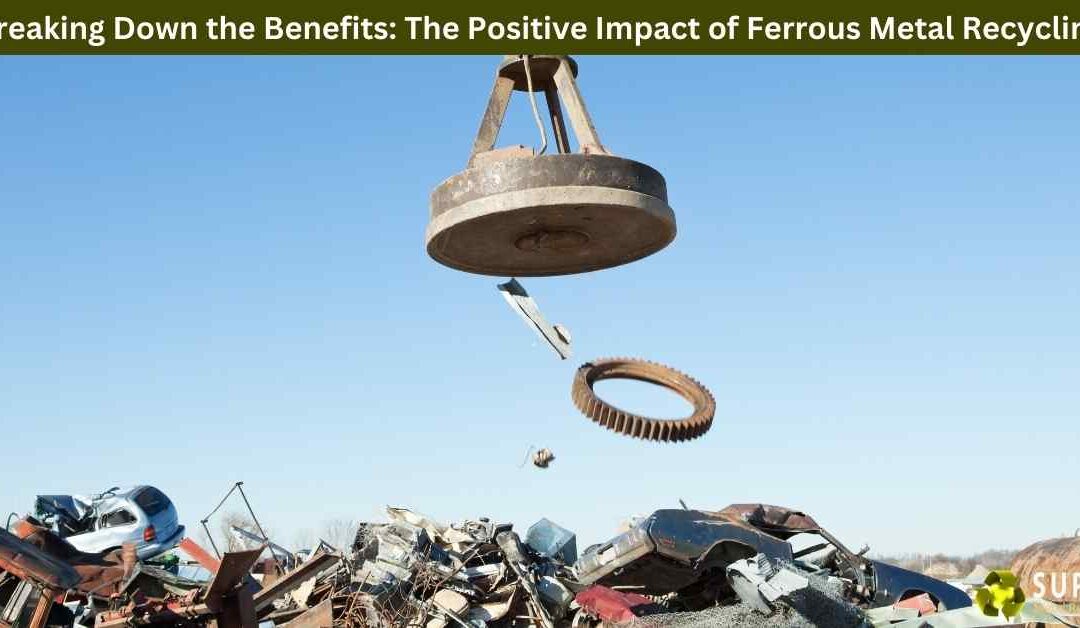In today’s world, recycling plays an essential role in resource conservation and environmental protection. Ferrous metals, which contain iron and include materials like steel, are some of the most widely recycled metals globally. Ferrous metal recycling not only conserves valuable natural resources but also significantly reduces environmental impact and supports the economy. Here, we break down the major benefits of recycling ferrous metals and why it’s essential for a sustainable future.
What are Ferrous Metals?
Ferrous metals are iron-based metals, and they are often characterized by their magnetic properties and high tensile strength. Common examples include:
- Steel: Used in construction, vehicles, appliances, and more.
- Cast Iron: Found in products like pipes, automotive parts, and cookware.
- Wrought Iron: Known for its malleability and used in gates, railings, and decorative items.
These metals are abundant in everyday items and have a long life cycle, making them highly suitable for recycling.
The Environmental Benefits of Ferrous Metal Recycling
1. Reduced Energy Consumption
- Recycling ferrous metals saves significant energy compared to producing new metals from raw ore. Manufacturing steel from recycled materials uses up to 74% less energy than using raw iron ore, significantly lowering energy demands on our planet’s resources.
2. Lower Greenhouse Gas Emissions
- Steel production from recycled materials emits fewer greenhouse gases than traditional mining and refining processes. Recycling one ton of steel prevents the emission of approximately 1.8 tons of carbon dioxide. This reduction helps combat climate change and decreases air pollution.
3. Conservation of Natural Resources
- Ferrous metals come from finite natural resources, primarily iron ore, coal, and limestone. By recycling, we reduce the need for mining, preserving these resources for future generations. This also reduces the environmental degradation caused by mining activities, such as habitat destruction and soil erosion.
4. Reduced Landfill Waste
- Without recycling, large amounts of ferrous metals end up in landfills, where they take up valuable space and contribute to environmental pollution. Recycling allows us to reclaim these metals, reducing landfill waste and promoting more sustainable waste management practices.
The Economic Benefits of Ferrous Metal Recycling
1. Job Creation and Economic Growth
- The recycling industry supports thousands of jobs, from collection and sorting to processing and repurposing metals. According to industry studies, recycling creates more jobs per ton of material than waste disposal or incineration, fostering economic growth.
2. Cost Savings for Manufacturers
- Using recycled ferrous metals reduces production costs for manufacturers. Recycling metals, especially steel, is more cost-effective than extracting and processing new materials. These savings can be passed on to consumers and encourage sustainable practices across industries.
3. Supply Stability
- Recycling provides a reliable source of metal materials, stabilizing supply chains and reducing dependence on foreign mining and raw material exports. This self-sufficiency is particularly crucial during economic disruptions, helping industries maintain consistent production.
Social and Community Benefits of Ferrous Metal Recycling
1. Environmental Awareness and Responsibility
- Metal recycling promotes a culture of sustainability within communities. Recycling initiatives increase awareness about resource conservation and inspire individuals and businesses to adopt more responsible waste management practices.
2. Cleaner, Healthier Communities
- By reducing landfill waste and pollution, ferrous metal recycling helps create cleaner environments. This, in turn, promotes public health, reducing exposure to pollutants that can harm ecosystems and human health.
How Ferrous Metal Recycling Works
The process of recycling ferrous metals typically involves several stages:
- Collection and Sorting: Scrap metal is collected from various sources, including construction sites, old appliances, and vehicles.
- Processing and Shredding: The metal is shredded to prepare it for melting, making it easier to handle and process.
- Melting: In a large furnace, the shredded metal is melted at high temperatures. This process requires far less energy than producing new metal.
- Purification and Solidification: The molten metal is purified to remove impurities, then solidified into new shapes, ready for manufacturing.
Final Thoughts
Ferrous metal recycling is a simple but powerful way to make a positive impact on the environment, economy, and society. By conserving resources, reducing emissions, and supporting local economies, recycling ferrous metals offers benefits that extend beyond the recycling industry. Each time ferrous metal is recycled, it contributes to a cycle of sustainability and ensures that valuable resources are used wisely. So, whether as individuals or industries, choosing to recycle ferrous metals is a step toward a healthier, more sustainable world.
If you are in Sandringham, Victoria 3191, and looking for a metal recycling service, this is the best way to visit us.
Super Metal Recycling
345 Frankston – Dandenong Road, Dandenong South VIC 3175
(03) 9706 4909


Recent Comments